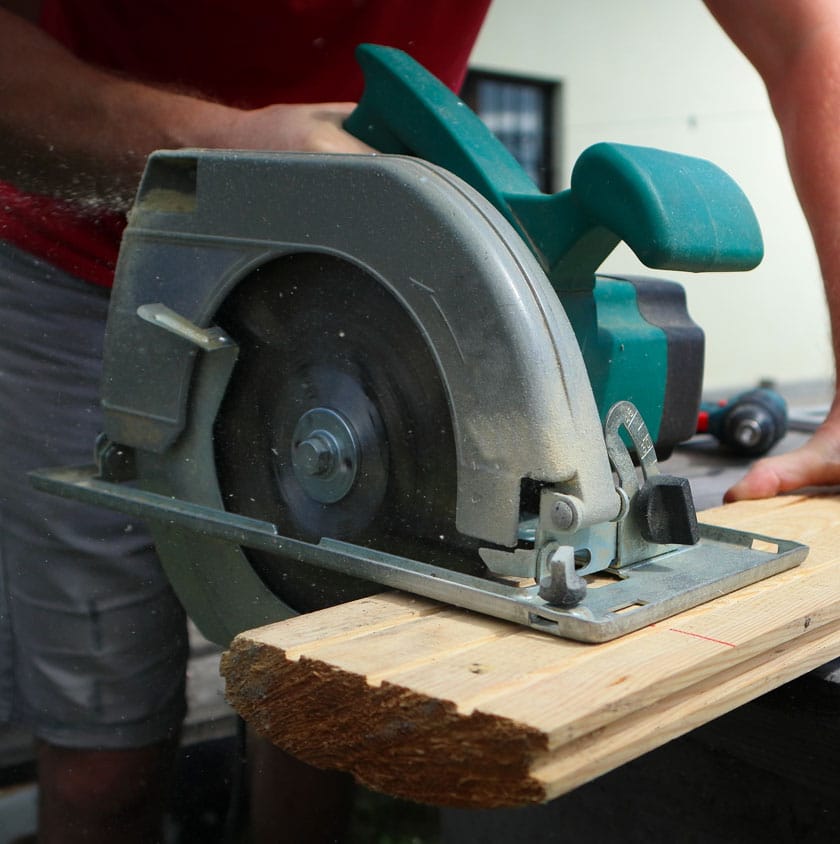
Carpenter Insurance
Compare Carpenter Insurance Quotes
- Complete one short form
- Quickly compare quotes
- Find a great deal today!

Compare insurance quotes from UK’s leading carpenter insurers including:
Why Compare Carpenter Insurance Quotes At SimplyQuote.co.uk?
Comparing carpenter insurance ensures you get the right level of protection for the work you actually do — without overpaying or missing key cover.
At SimplyQuote.co.uk, we’ve partnered with Quotezone to bring you real-time quotes from trusted UK insurers. Instead of ringing around or filling out the same form five times, you can compare tailored policies in minutes — all based on your trade, tools, and business setup.
Whether you work solo on domestic joinery jobs or manage a team building large timber frames, the system matches you with insurers who understand your risks — and won’t try to sell you cover you don’t need.
It’s quick, no-pressure, and built to help you get insured properly, not just cheaply.
What Do I Need to Get a Quote?
To get a carpenter insurance quote, you’ll need to provide some basic details about your trade, the type of work you do, and the cover you’re looking for.
Most people complete the process in under five minutes. You’ll usually be asked for:
- The type of carpentry you carry out — domestic, commercial, structural, shopfitting, restoration, etc.
- Whether you’re self-employed or run a company with employees
- Your business postcode and trading name (if applicable)
- Annual turnover and number of employees or subcontractors
- The level of public liability cover you’d like — often £1M, £2M, £5M or £10M
- Any extras you might need, such as tool cover, personal accident cover, or employer’s liability
- Information about past claims, refusals, or ongoing legal disputes
This information helps insurers assess your risk level and offer tailored quotes. A solo carpenter building kitchen cabinets needs very different cover to a business fitting structural timber frames on commercial sites.
As long as you provide accurate details, the process is quick — and the quotes you get will actually reflect the work you do.
Why Do I Need Carpenter Insurance Cover?
Carpenter insurance protects you financially if your work leads to injury, property damage, or legal action — even if the mistake wasn’t deliberate.
It also gives your clients peace of mind and can be a requirement before work begins.
Carpentry carries more risk than many people realise. You might accidentally damage a client’s flooring, misfit a structural element, or cause injury if a tool is left out on-site. Any of these incidents could lead to a claim — and without insurance, you could be footing the bill personally.
Public liability cover is the core of most policies, but many carpenters also choose to protect their tools, insure against personal injury, or cover employees with employer’s liability (which is a legal requirement if you have staff).
Even if you’re self-employed and only take on small projects, a single accident can cost thousands. Having the right cover in place means you can focus on the job, not worry about the “what ifs.”

What Insurance Do Self-Employed Carpenters Need?
Most self-employed carpenters need at least public liability insurance, and many also choose tool cover and personal accident protection.
If you work alone, a single claim or injury could leave you without income — or worse, liable for damages.
Even if you’re only doing small domestic jobs, you’re still responsible for what happens on-site. If you damage a floor, nick a pipe, or a customer trips over your gear, they could make a claim against you. Without insurance, you’d have to cover legal fees and compensation yourself.
Here’s what self-employed carpenters often include in their policy:
- Public liability insurance — covers injury or damage caused by your work
- Tool cover — protects the gear you rely on to earn a living
- Personal accident cover — pays out if you’re seriously injured and can’t work
- Professional indemnity (optional) — useful if you provide design advice or detailed plans
- Employer’s liability — only needed if you bring in staff, subcontractors, or apprentices
Being self-employed doesn’t reduce your risk — it just means you’re the one left to deal with the consequences. The right policy gives you security, even when you’re working solo.
Does Carpenter Insurance Cover Subcontractors Or Apprentices?
Carpenter insurance doesn’t automatically cover subcontractors or apprentices — you’ll need to declare them, and insurers may apply specific conditions.
If you get it wrong, your policy could be invalid when you try to claim.
Apprentices
If you hire an apprentice — even part-time or unpaid — you’re legally required to have employer’s liability insurance. Most policies cover apprentices, but only if they’re properly declared. You may also be asked about their duties and supervision.
Subcontractors
Insurers generally split subcontractors into two types:
- Labour-only subcontractors – These individuals work under your instruction, use your tools, and follow your schedule. They’re usually treated like employees and must be covered by your employer’s liability policy.
- Bona fide subcontractors – These tradespeople work independently, supply their own tools and materials, and carry their own insurance. You typically don’t need to insure them, but you may need to check their cover is valid and documented.
If you’re unsure how a worker is classified, speak to your insurer. Guessing wrong could leave you exposed to claims you thought were covered — especially if someone is injured on-site.
What Does Carpenter Insurance Cover Include?
Carpenter insurance usually includes public liability, tool cover, employer’s liability (if you have staff), and often personal accident or legal expenses cover.
You can also customise your policy to suit your business size and the type of carpentry work you do.
Here’s a breakdown of what’s typically included:
- Public liability insurance – Covers injury or property damage caused to third parties. If a client trips over a power cable, or you accidentally damage a staircase during installation, this cover steps in.
- Tool and equipment cover – Protects the tools you use day-to-day. It pays to repair or replace them if they’re stolen, lost, or damaged — whether stored on-site, in your van, or at a workshop.
- Employer’s liability insurance – A legal requirement if you hire anyone. It protects you if an employee or apprentice is injured or becomes ill due to their work.
- Personal accident cover – Provides a payout if you suffer an injury that stops you working. Ideal for sole traders who rely on every job to keep the business moving.
- Professional indemnity – Optional cover if you provide design advice or technical drawings. It protects you from claims linked to alleged negligence or errors.
- Legal expenses cover – Can help with legal disputes, tax investigations, or defending a claim that doesn’t fall under other types of cover.
You don’t need to include everything — but getting the right combination can save you from costly gaps in protection. Whether you’re hanging doors, doing first fix, or handling full-site joinery, there’s a policy setup to match.

What’s Not Included?
Carpenter insurance doesn’t cover everything — and knowing what’s excluded can help you avoid costly assumptions.
While policies vary by provider, most share some common exclusions you’ll want to watch for.
Typical exclusions include:
- General wear and tear – Insurance won’t pay out for tools or equipment that stop working due to age or overuse. It’s for unexpected losses, not routine breakdowns.
- Unattended tools – If your van is unlocked or your tools are left on an unsecured site overnight, insurers may decline theft claims — even if you have tool cover.
- Undeclared subcontractors or apprentices – If you bring in help but don’t declare it, your policy might not cover them — or you.
- Working outside your policy scope – Jobs involving structural design, commercial refurbishments, or listed buildings may need additional cover. If it’s not declared, it’s not covered.
- Faulty workmanship – Insurance usually doesn’t pay to fix bad work. That’s where professional indemnity comes in — if you’ve added it.
- Illegal or unqualified work – If you’re doing specialist work (e.g. heritage restoration or structural joins) without the proper certification or permission, your policy won’t protect you.
Every policy comes with terms and exclusions. Before you start a big job — or accept subcontracted work — it’s worth checking your paperwork. That way, you’re not left exposed if something goes wrong.
How Much Does Carpenter Insurance Cost?
Basic carpenter insurance can start from around £60 to £120 per year, but your actual cost depends on the type of work you do, your cover levels, and the size of your business.
A self-employed carpenter handling small domestic jobs might pay less than £10 a month for public liability insurance. But if you employ others, work on commercial sites, or carry expensive tools, your premium will be higher.
Here’s what typically affects cost:
- Scope of work – First-fix and structural carpentry tends to carry more risk than kitchen fitting or bespoke joinery.
- Cover level – A policy with £5 million public liability will cost more than one with £1 million — but some clients require it.
- Staff and subcontractors – Employer’s liability adds cost, but it’s legally required if you hire anyone.
- Tool cover and extras – Adding tool protection, personal accident, or professional indemnity will increase the price.
- Claims history – Past claims (even minor ones) can push your premium up.
- Location – If you’re based in a high-risk area (e.g. where tool theft is common), your price may reflect that.
The good news is: if your work is lower risk, and your claims history is clean, there are often very affordable options available — especially when you compare quotes.
How Can I Save Money On Carpenter Insurance?
You can save money on carpenter insurance by tailoring your cover to the work you actually do, comparing quotes, and keeping your claims history clean.
It’s not about going cheap — it’s about paying for the right protection and nothing more.
Here’s how many carpenters cut costs without cutting corners:
- Choose the right level of public liability – If you only work on domestic jobs, you might not need £5 million cover — £1M or £2M may be more than enough.
- Increase your excess – Voluntarily increasing your excess can reduce your monthly or annual premium — just make sure you could afford it if you needed to claim.
- Store your tools securely – Insurers reward low-risk behaviour. Keeping tools in a locked van or alarmed storage unit reduces your risk and, in some cases, your price.
- Skip unnecessary extras – If you don’t employ anyone, there’s no need to pay for employer’s liability. Likewise, only add professional indemnity if you’re doing design or advisory work.
- Compare quotes regularly – Don’t let your policy auto-renew blindly. Even small businesses can benefit from new customer offers or better rates when they shop around.
The key is to stay insured for the risks that apply to your business — no more, no less. A good policy doesn’t have to be expensive. It just has to be right.
How To Compare Carpenter Insurance Quotes Online
Comparing carpenter insurance quotes at simplyquote.co.uk takes just a few minutes — and you only need to enter your details once.
We connect you with a panel of trusted UK insurers who specialise in trades like yours.
Here’s how it works:
- Tell us what you do
Choose “Carpenter” as your trade, confirm whether you’re self-employed or a business, and add your postcode. - Select the cover you need
Decide if you want public liability only, or extras like tool cover, personal accident, or employer’s liability. - See tailored quotes instantly
You’ll get a list of prices from insurers who understand carpentry risks — no cold calls or hidden charges. - Compare cover side-by-side
Review what’s included in each policy — from cover limits to exclusions — and see how they stack up. - Apply directly with your chosen insurer
Once you’ve found a policy that fits, we’ll direct you to the provider’s site to complete the application.
This comparison process is powered by Quotezone and built to help you save time, reduce hassle, and make sure you’re properly protected.
Frequently Asked Questions
Public liability insurance isn’t legally required, but employer’s liability is if you hire staff — even an apprentice. Many contractors and clients will also expect proof of cover before you’re allowed on site.
Yes. Some insurers specialise in tradespeople with a claims history. You might pay a higher premium, but comparing quotes can help you find the best deal.
Sometimes — but you’ll need to declare it when getting a quote. Working on heritage properties may require additional cover or approval from the insurer.
You’ll need to tell your insurer. A shift in the type or scope of work — for example, moving from domestic fitting to structural timber frames — could affect your cover or premium.
Yes, but you’ll need to meet certain conditions — like locking your van or using an approved storage unit. Most policies won’t pay out if tools are left unsecured.
Most policies start immediately after you complete the quote and payment process. Your documents are usually emailed within minutes.
Yes. Most insurers offer monthly instalment plans, but you’ll typically pay a bit more overall than if you pay annually up front.
Yes. Even casual or part-time work carries risk — especially if you’re working in someone’s home. Public liability is strongly recommended, no matter how small the job.
Written by Chris Richards
Page last reviewed on 1st April 2025 by Chris Richards
